View our full pricing page for detailed information.
In addition to our Pro (paid) plans, Eagle Eyes Pilot is also available for free. Anyone can download Eagle Eyes Pilot onto their drone controller or Android device without need for verification and access several useful features at no cost. For details, see our pricing page.
All prices are in USD for an annual subscription. No auto-renewals
* A verified account is required to purchase a license. Account verification can take 1-3 business days.
* A purchased license can be used on any supported device (Pilot or Scan). Once a device is activated using a license, the device becomes permanently linked to that license and cannot be replaced with a different device. If you need to switch your license to a different device please contact info@EagleEyesSearch.com.
Yes, we offer a 30-day free trial of the SAR license. You can request a trial here.
Yes, you can run both the Beta and Stable versions of Eagle Eyes on the same device under a single license, since licensing is per device, not per app version.
The Beta version has a yellow eagle eye logo and the Stable version has a blue eagle eye logo:

BETA
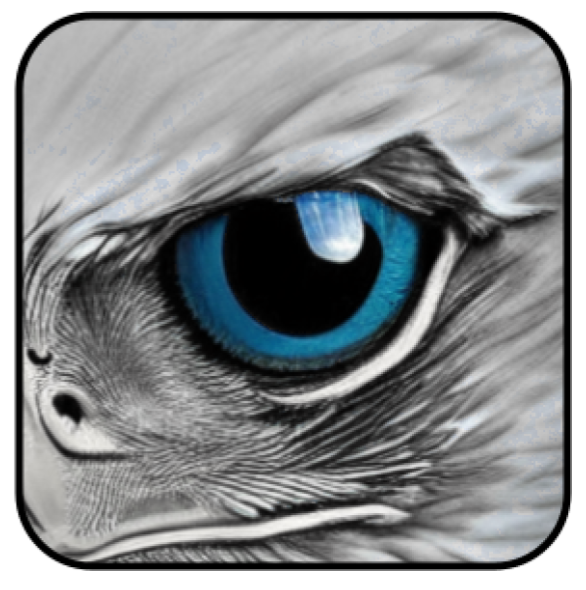
STABLE
At Eagle Eyes, we release Beta versions early to gather real-world feedback and accelerate improvements, though bugs are expected. For mission-critical work, we recommend having both installed. If the Beta causes issues, you can easily switch back to the Stable version.
You can download both versions here.
We currently only offer machine-locked licenses, meaning that a license is specific to the device you run the software on. You are free to share your device with other users within your organization. In order to accommodate multiple devices, we offer team licenses that contain multiple keys. A key unlocks the license on a single device. Once issued, keys cannot be revoked or transferred to another device.
Contents
→ System requirements for Eagle Eyes Pilot
→ System requirements for Eagle Eyes Scan
System requirements for Eagle Eyes Pilot
Eagle Eyes Pilot runs on Android devices (e.g., Galaxy S10 or newer) running Android 8+ and compatible with DJI SDK-4 or SDK-5, plus at least 2GB of free storage. It can also run on compatible DJI controllers.
System requirements for Eagle Eyes Scan
Key points on Laptop Specs:
| Spec | Requirement |
|---|---|
| Operating System | MacOS: Tested on Ventura (13) and Sonoma (14) Windows: Tested on Windows 10, 11 |
| Processor | The app should run fine on any modern CPU. Higher-end CPUs will just allow faster and more responsive operation. Windows: Most modern mid-range and above laptops should work. Some lower-end or older processors are not compatible with the app [Specifically, because they do not support AVX instructions] • Supported: Intel Core i3/i5/i7 or AMD Ryzen processors from 2013 onward. • Not Supported: Celeron, Atom, or Pentium Silver processors for TensorFlow-heavy workloads. Mac: Macbooks with M1, M2, … (arm) chips are officially supported and the system should run well on these machines. Older (pre 2020) Mac Computers with Intel CPUs are not officially supported - though you can try the X86_64 version. You may experience errors and slow speeds - if so sorry - full support is in the works. |
| Drone compatibility | Eagle Eyes Scan is drone-agnostic - it can work on recorded footage from any drone, and livestream from any drone with a controller capable of outputting raw HDMI video (with no control overlays). That said - the app has been built and tested primarily on imagery from DJI drones. It uses DJI-specific file-naming conventions to group files, e.g. • The app looks for a .SRT file corresponding to .MP4 files to read per-frame coordinates from video • The app uses DJI file-suffix conventions (e.g. _V.MP4, _T.MP4, _Z.MP4) to group together files from different sources. We have limited support for recognising Autel naming conventions (MAX_*.JPG / IRX_*.JPG) to associate visual / thermal files. |
| Memory (RAM) | We recommend at least 8GB of RAM, 16GB is better. |
| GPU | Currently not used by Eagle Eyes Scan - though this may change as we incorporate new detectors. |
Eagle Eyes Pilot 1.5.0 - Full Walkthrough
Eagle Eyes Pilot is an app for first responders that runs on DJI drone controllers and Android devices. It has built-in computer vision optimized for search and rescue. and it integrates the drone with ground operations by connecting to CalTapo for real-time mapping. More recent additions include airspace awareness and live streaming, which we cover in separate videos.
Eagle Eyes Pilot
Eagle Eyes Pilot is an all-in-one drone app for Search and Rescue that detects color and motion anomalies in real time, and streams images and the live drone track directly to the team's CalTopo map, while the drone is still in the air.
In our latest release, Eagle Eyes Pilot v1.5.0, we've added the Eagle Eyes Livestream Viewer, a new way to share your drone's live view wirelessly while your drone is in the air. This feature lets you stream your drone feed over the internet so both on-site teams and remote viewers can watch what the drone sees, from anywhere.
This first beta release of Eagle Eyes Livestreaming works only while flying your DJI drone in Eagle Eyes Pilot and supports up to three remote viewers (three separate devices viewing the drone's live stream). It currently performs best under the following conditions:
Outside these two configurations, mileage may vary. We've observed that some mobile data networks may not relay livestream data reliably between different providers or hotspots, which can prevent the stream from connecting across networks. This means that if your drone controller is hosting the livestream via a mobile data hotspot, and a viewer attempts to connect using a device on another mobile network or provider, the stream may not be accessible unless both are on the same hotspot. When connected to a Wi-Fi, Starlink, or home or office internet connection (non-mobile data), the livestream should work. (Feedback on how this works in your environment is greatly appreciated.)
To start a livestream, open Eagle Eyes Pilot, tap the  Livestream icon at the top of the screen, start livestreaming. Alternatively tap the three lines in the top right → Livestream → Start Livestreaming, and then scan the QR code that appears on the controller screen. The QR code connects viewers to eagleeyessearch.com/livestream, where they can watch the live drone feed on their mobile or desktop browser. The Eagle Eyes Viewer shows a split-screen with the live drone video on the left and a synced map on the right, displaying the drone's location, altitude, orientation, and connected CalTopo map features. Both panels can be expanded to full screen, and a quick link to the current CalTopo map is included. This livestreaming feature is currently in beta and available at no additional cost for all Eagle Eyes Pro plan license users. For more information, see our pricing page.
Livestream icon at the top of the screen, start livestreaming. Alternatively tap the three lines in the top right → Livestream → Start Livestreaming, and then scan the QR code that appears on the controller screen. The QR code connects viewers to eagleeyessearch.com/livestream, where they can watch the live drone feed on their mobile or desktop browser. The Eagle Eyes Viewer shows a split-screen with the live drone video on the left and a synced map on the right, displaying the drone's location, altitude, orientation, and connected CalTopo map features. Both panels can be expanded to full screen, and a quick link to the current CalTopo map is included. This livestreaming feature is currently in beta and available at no additional cost for all Eagle Eyes Pro plan license users. For more information, see our pricing page.
This is our first public version of wireless livestreaming, expect quirks, share your feedback from field tests, and help us refine how Eagle Eyes teams everywhere pump the feed!
Please reach out at info@EagleEyesSearch.com
You can use Eagle Eyes Pilot and Scan together. The benefit is that you will be able to transmit live video and live coordinates to a nearby laptop for analysis. You can do this by either piloting the drone directly in Eagle Eyes Pilot, or by flying with DJI Pilot 2 while running Eagle Eyes Pilot in the background. Connect the controller to your computer using an HDMI cable and capture card for the video feed, while live coordinates are transmitted wirelessly.
You don't need to run Eagle Eyes Pilot on the controller to get a live feed into Eagle Eyes Scan — but doing so enables live coordinate transmission, which adds map integration and tracking capabilities in Eagle Eyes Scan.
The video below explains the setup and process.
Contents
→ Live drone video into Eagle Eyes Scan (without live telemetry)
→ Adding live telemetry
Live drone video into Eagle Eyes Scan (without live telemetry)
Eagle Eyes Scan supports "wired" live-streaming from the drone to your laptop or desktop via HDMI. This allows teams to watch a live drone feed on larger displays, while at the same time recording the footage as it comes in (in 1080p) and seeing detections in real-time. This setup is very flexible; you can pause at any time and go back to a specific time to inspect a specific frame or detection, then jump back into the live feed, without interrupting the flow of the pilot.
Required equipment
To set this up, you need to send an HDMI feed from your drone controller into a laptop or desktop computer running Eagle Eyes Scan. This means you need:
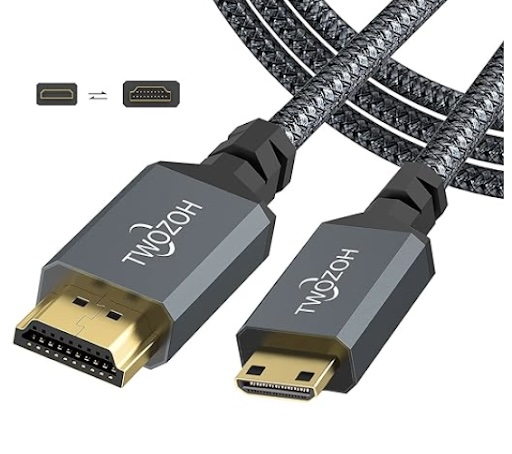
Mini-HDMI to HDMI
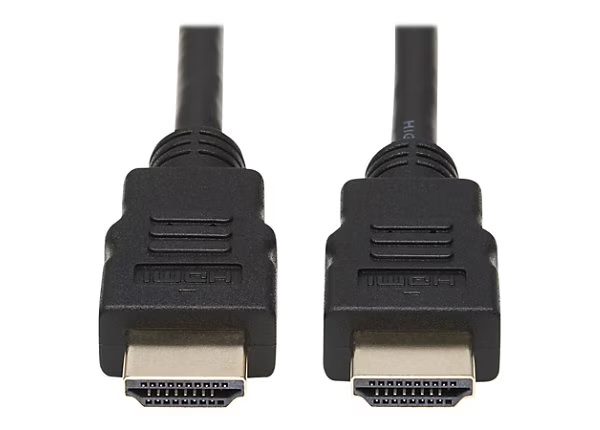
HDMI to HDMI
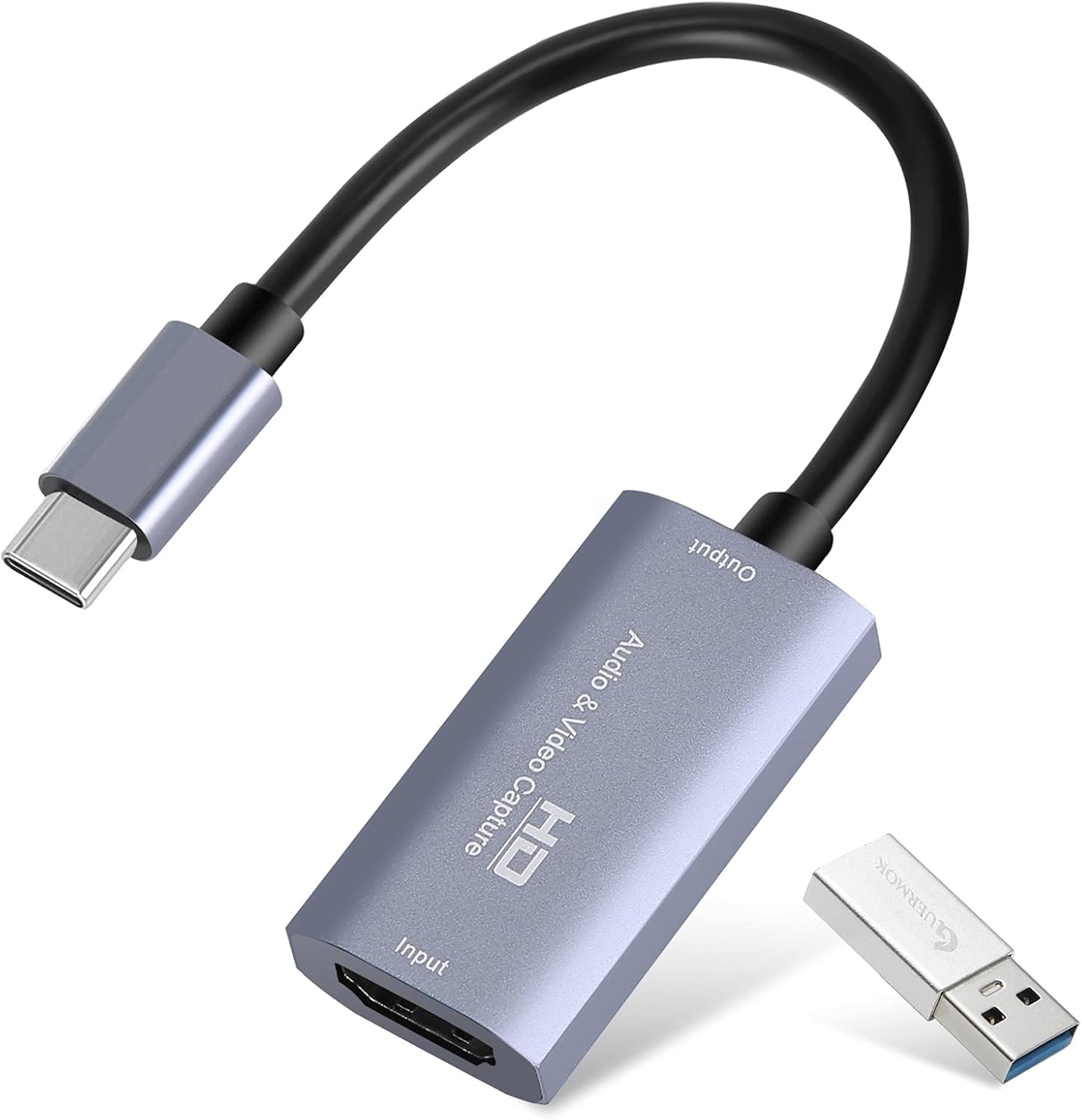
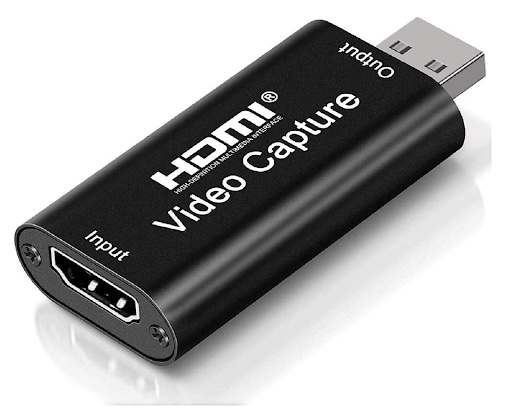

HDMI capture cards come in various shapes and sizes. Most cards will work with Eagle Eyes Scan.
Getting a clean HDMI feed
For best detection results, send a clean HDMI feed (no overlays) from your drone controller. Overlays can distract the detector. See how to get clean HDMI output from your controller for instructions using a specific DJI controller as an example.

Live streaming setup with Eagle Eyes Scan
Running the detector
Open Eagle Eyes Scan. Click "+", then "📺 HDMI Livestream". You should see a window pop up with one or more video sources. Double click the one coming from the drone. Note that Record is checked by default. This saves the video as it comes in so that you can go back to past frames and detections, as you would for a pre-recorded video.
You should now see the live stream. Click the eagle button (🦅) to start running the detector. Tap "v" to view fullscreen. You can press space to pause/resume, the usual z/x/c controls to zoom, and Command-P to print screen (save a screenshot).
Troubleshooting

The "rainbow of death" HDMI display issue
Adding live telemetry
To get live telemetry data (GPS coordinates, altitude, speed, etc.) overlaid on your Scan detections, in addition to the above, you'll need Eagle Eyes Pilot running on your drone controller. See our compatibility overview for supported drones and controllers. Here's how Pilot and Scan work together:
Yes, you can easily switch from your DJI app to Eagle Eyes Pilot app on your drone controller mid flight for live detections while the drone is in the air.
Or you can live stream from your drone controller into Eagle Eyes Scan using an HDMI cable.
Yes, Eagle Eyes Scan (our desktop app) can run real-time computer vision on any HDMI input.
The best setup is to send a clean HDMI feed (no overlays) from your drone controller into a laptop running Eagle Eyes Scan, overlays can distract the detector. See How do I use Eagle Eyes Pilot and Scan together.
If your pilot app or drone can't output a clean HDMI video feed without screen/pilot display overlays, you can draw a bounding box in Eagle Eyes Scan to limit detector distractions and only run the computer vision detector on a clean part of the frame.
📺 See how to connect HDMI and set bounding boxes in the Scan livestream tutorial:
You can also process any recorded image or video with Eagle Eyes Scan. See processing image sets for details.
Yes, you can switch between apps midflight.
From Eagle Eyes Pilot → DJI Pilot:
Use the in-app shortcut: Settings (hamburger menu, top-right) → Switch to DJI app.
From DJI Pilot → Eagle Eyes Pilot:
If you previously opened Eagle Eyes Pilot during this session, you can return to it by pressing the back button on the controller. It may take a few presses depending on what you did in DJI Pilot 2.
You can also swipe up on the screen at any time and toggle between apps manually.
Eagle Eyes Scan runs on both Windows and MacOS/OSX. For Apple devices, we strongly recommend installing on a device with ARM64 architecture (M1, M2, M3, or M4 chipsets). We do offer a distribution for Intel-based (x86) Apple computers, but performance may vary. Find more information in the 📘 Eagle Eyes Scan Manual.
Eagle Eyes does not support iOS due to DJI dropping iOS SDK support. Find more information in the 📘 Eagle Eyes Pilot Manual.
Yes. Both Eagle Eyes Scan and Pilot works completely offline. The only thing you need the internet for is to get a license key to unlock the software on your device once.
In order to capture the drone's GPS track alongside recorded video footage in DJI Pilot 2, which allows Eagle Eyes Scan to geolocate frames in your video, extract GPS tracks for upload into CalTopo (see also: uploading offline GPS tracks to CalTopo), and display the drone's location on the Eagle Eyes Scan map, you need to enable video captions (.SRT files) in the DJI Pilot 2 settings.
See this video for instructions on turning on video captions:
When video captions are enabled, DJI Pilot 2 records a .SRT file alongside each .MP4 video file. It is essential to load both the .SRT and .MP4 files into Eagle Eyes Scan. This ensures GPS data is extracted and each video frame is properly geolocated.
Eagle Eyes Pilot - our Android app, is compatible with many DJI drones (see below). Eagle Eyes Scan, our desktop app, lets you scan through images and videos from any drone. If your drone controller has an HDMI output that provides a clean video feed (without overlays), you can also use Eagle Eyes Scan to view and process this video feed in real time.
See our Compatibility page for complete overview of Eagle Eyes compatibility. And the DJI SDK Compatibility Page for the most up-to-date changes around what drones will be compatible with the DJI SDK.
| Drone Model | Compatible Controllers |
|---|
Unable to load compatibility data. Please visit our compatibility page for the most up-to-date information.
📱 Android Requirements: Android 7+ with processor comparable to Snapdragon 855 (Galaxy S10 level), 6GB+ free storage. Not compatible with Google Pixel 6/7 phones due to DJI SDK bug.
For more information on Compatibility see 📘 Eagle Eyes Pilot Manual.
Yes, Eagle Eyes Scan can be used on live footage from manned aircraft.
Several teams use Eagle Eyes Scan for live color detection on helicopters and other manned aircraft. This blog post highlights one of their setups using custom-mounted GoPros.
All you need is an HDMI video signal that can be fed into a laptop or Windows tablet onboard the aircraft. Once the camera is active, Eagle Eyes Scan will automatically detect and import the HDMI livestream.
If you'd like to include live GPS data in your feed, you can connect an external GPS receiver (such as this model) to your laptop. When you select the live feed in Scan, you'll see an option to choose a GPS source — this allows detections and imagery to be automatically georeferenced during flight.
Our drone app, Eagle Eyes Pilot, is currently compatible only with DJI drones, though we plan to expand cross-platform compatibility in the future.
Our desktop app, Eagle Eyes Scan, can however be used with Autel drones — with a few considerations.
⚠️ Note: We haven't tested Eagle Eyes extensively on Autel drones yet. We strongly recommend trying the setup with your own Autel drone before purchasing a license to ensure compatibility with your specific model and controller setup.
You can analyze imagery and video captured by your Autel drone, including location data for each frame.
You can connect your Autel controller or Live Deck to your computer using an HDMI cable and capture card. For best results, ensure you have a clean HDMI feed (no on-screen controls). There are two ways to achieve this:
If you can't fully remove the overlays, it's still possible to run detections on a rectangle in the screen that doesn't contain overlays. When starting the detector on a live feed, Eagle Eyes Scan lets you select a portion of the screen to analyze, excluding the area with controls. Click "Click to detect on sub-frame" (see screenshot below) and draw a rectangle around a clear area of the video feed.
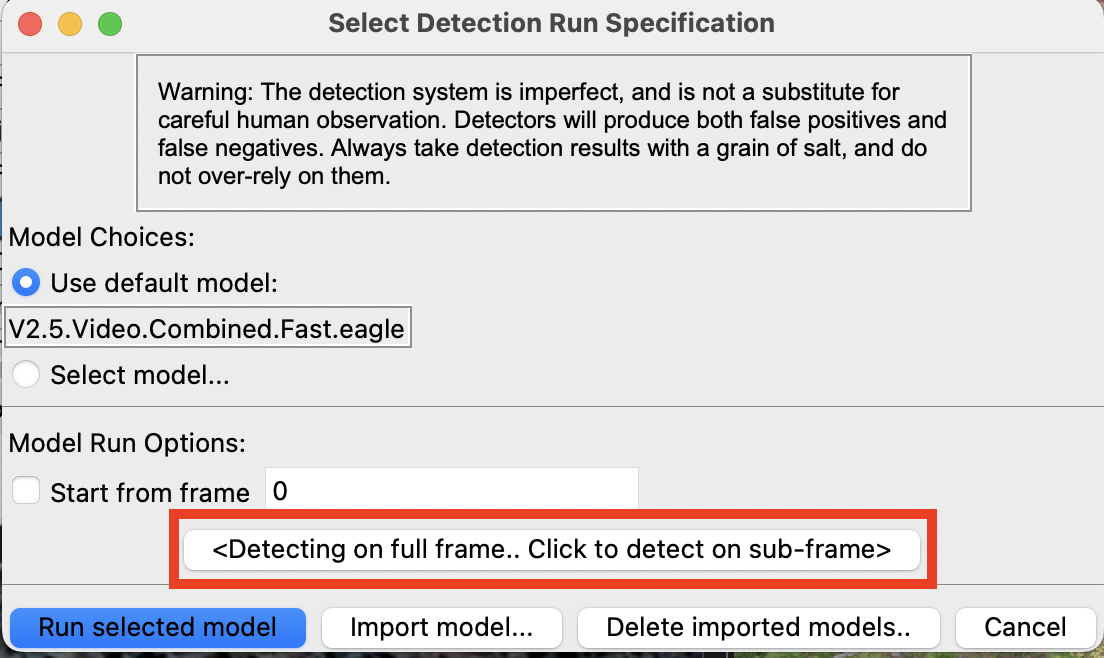
📍 Note: Eagle Eyes Scan (version 1.1.2 and later) can process live video from an Autel drone, but live coordinates are not displayed. Coordinates are only available when working with pre-recorded footage and flight logs.
⚠️ Note: We haven't tested Eagle Eyes extensively on Skydio drones yet. We strongly recommend trying the setup with your specific Skydio model before purchasing a license to ensure compatibility with your specific model and controller setup.
You can analyze imagery and video captured by your Skydio drone.
You can connect your Skydio controller to your computer using an HDMI cable and capture card. For best results, ensure you have a clean HDMI feed (no on-screen controls / heads-up display), so the color/motion detector doesn't get triggered by the overlays.
If you can't fully remove the overlays, it's still possible to run detections on a rectangle in the screen that doesn't contain overlays. When starting the detector on a live feed, Eagle Eyes Scan lets you select a portion of the screen to analyze, excluding the area with controls. Click "Click to detect on sub-frame" (see screenshot below) and draw a rectangle around a clear area of the video feed.

📍 Note: Eagle Eyes Scan (version 1.1.2 and later) can process live video from a Skydio drone, but live coordinates are not displayed. Coordinates are only available when working with pre-recorded imagery.
While the detection system is primarily designed for detecting color and motion anomalies, it can work on thermal. It's good at picking out motion on thermal when the drone is stationary. The detector will also tend to pick out small objects that are warmer than the surroundings.
See the 📘 Eagle Eyes Pilot Manual for more details.
The motion detector depends on having a stable background. Even small background movements (from wind, joystick input, or shifting water surfaces) can cause the system to reduce or temporarily disable motion detection to avoid false alerts.
Another factor is scene complexity. Since the detector can highlight a maximum of three anomalies per frame (color and/or motion combined), a large number of color anomalies can drown out motion detections. In cluttered or highly colorful scenes, the detector may prioritize color contrast over movement.
If you want to focus purely on movement, you can switch to a detector with motion-only detection:
V2.5.Video.Motion) — For recorded footageThis disables color analysis and helps the motion detector perform more reliably in complex visual environments.
💡 Tip: Motion detection works best when the drone is completely stationary. Any camera movement will reduce the detector's ability to identify moving objects.
The Eagle Eyes computer vision system enables real-time detections on your live drone feed. This means you can look back over areas you've flown and review all the images that triggered a detection helping hone in on clues identifying things that might otherwise be overlooked. The detector can be run on recorded footage from any drone, any image or any video file. For more information on how the detector works, see here.
The intended way to review detections after the fact is by running the detector on recorded footage using our desktop software Eagle Eyes Scan. The following video outlines the recommended workflow for reviewing recorded images after a drone flight in Eagle Eyes Scan. Note that the same workflow applies to recorded video files as well.
It is also possible to review past detections directly in Eagle Eyes Pilot, although this is not the recommended workflow. To do this, either tap the three dots (⋯) button on the bottom right of the main landing screen in Eagle Eyes Pilot. Then select View Past Detections:
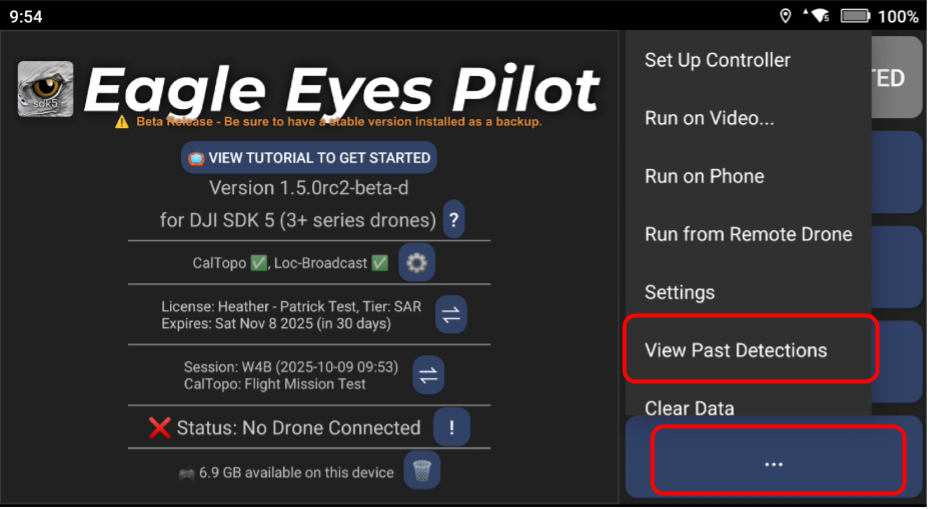
Or access the detections view from within the piloting screen by long-pressing the film roll icon next to the camera photo point marker button:

That will bring you to the detections page in Eagle Eyes Pilot:
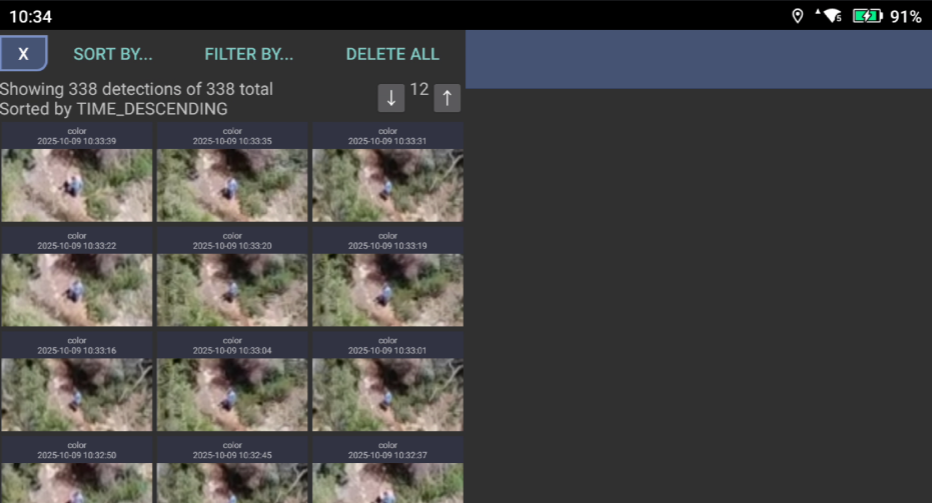
From the detections page, you can filter results by session or remove all filters to display all detections stored on your device from previous flights.
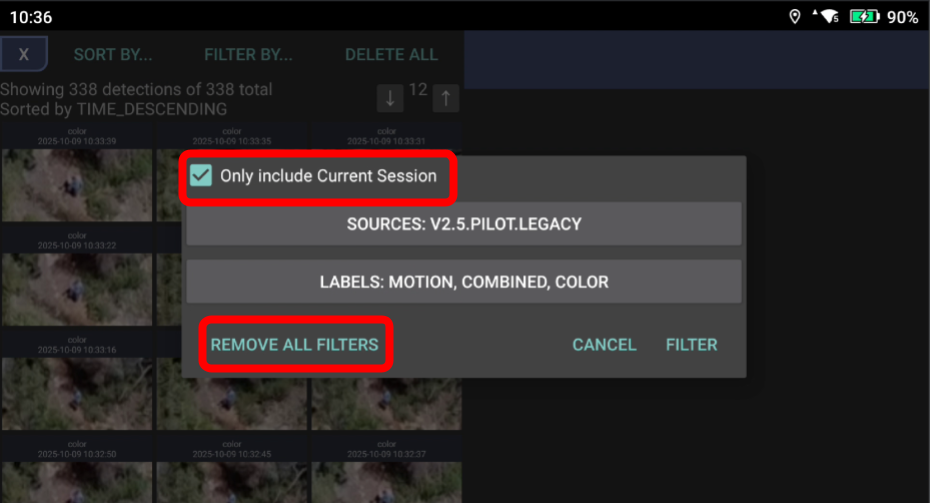
Note that filtering detections by session will reset if you shut down the app and restart. Detections can also be sorted by time and detection score.

Again, while detection review in Eagle Eyes Pilot is available, the recommended workflow for reviewing, analyzing, and exporting detections remains through Eagle Eyes Scan on desktop. Development is underway to expand and improve in-app review options in future releases.
Using the Eagle Eyes Pilot Beta app does not compromise the drone's core flight systems or safety.
Eagle Eyes Pilot is built using DJI's official Software Development Kit (SDK) and runs as a standalone piloting app. It does not modify or replace the drone's firmware or hardware. All flight-critical functions, including GPS positioning, obstacle avoidance, stability, and return-to-home, remain under the control of DJI's signed firmware on the drone.
Even if the Eagle Eyes app were to freeze or be force-closed mid-flight, the drone would continue flying safely under DJI's control. You can also switch between Eagle Eyes Pilot and DJI Pilot 2 during flight, or run them side-by-side.
The two versions of our app:

STABLE

BETA
If you're concerned about risk, we recommend using the stable version for operations and installing the beta separately for testing new tools. You can run both the Beta and Stable versions of Eagle Eyes on the same device under a single license, since licensing is per device, not per app version. Download both here.
The exact workings are difficult to describe in plain English, but here's the gist of it.
The system detects objects based on colour or motion.
For colour, the detector looks for small patches of unusually coloured pixels. The more frequently a colour appears in the image, the less it's considered as a candidate for detection. The ideal target for the colour detector is a small cluster of pixels with a colour that stands out from the rest of the scene.
For motion, the system looks for isolated moving objects when the rest of the frame is stationary. Motion-based detections should not occur when the drone itself is moving, although small, distinct movements (like a bird against the sky or an object drifting on calm water) can still register.
Colour and motion may combine to create a single, combined detection.
The detector identifies up to three of the most unusual objects in each frame based on colour, motion, or a mix of both. Each detection is assigned a score from 0 (not significant) to 1 (highly significant). A detection appears on screen if its score is, or has ever been, above 0.5. Lower-scored detections are still logged and can be viewed later in Hypersensitive (H) Mode.
While many modern drones, such as those in the DJI Mavic 4 series, now feature AI object detection systems based on shape recognition, these rely on seeing a full or nearly full view of an object before triggering a detection. In many search and rescue or public safety scenarios, however, the most critical signs are not full shapes but subtle, almost imperceptible flashes of colour or slight movements partially obscured by terrain or vegetation. Those are the moments most likely to be missed by the human eye, and that's where the Eagle Eyes system excels.
Eagle Eyes computer vision also differs from other colour anomaly detection systems in that it's built for real-time detection, specifically designed to fit into the operational workflow for search and rescue and public safety teams who need immediate situational awareness while flying.
Walkthrough of demo cases in Eagle Eyes Scan (desktop app).
Examples of the Eagle Eyes detector in action.
Eagle Eyes uses color and motion analysis to highlight small areas ("blobs") that stand out from their surroundings. This method works well when there's strong color contrast between the subject and the background, for example, bright clothing against darker terrain, but it's not foolproof.
At times, the detector may highlight objects that aren't important (false positives) or miss objects that are (false negatives). Brightly coloured or moving leaves can sometimes trigger detections. Shadows, glare, and low contrast can also make detection more difficult.
The system identifies up to three anomalies per frame, so if there are many visually distinct or moving objects in the scene, it may prioritize those instead of the targets you care about.
The main thing to keep in mind is that the detector is there to assist your own observation, to draw your attention to possible clues, not to replace what you see yourself.
Other relevant questions:
In general - we try not to give advice on how to fly the drone - because it depends too much on context and environmental factors (tree canopy, slope, subject condition, pilot/spotter experience, team workflow etc.), and is best left to the local search team to decide. We simply suggest flying the drone in the same way you would as if you were looking for the person by eye. The detection system is just an assistant - it is still the human pilot/spotter who is primarily responsible for finding the subject.
In Brief…
That said - if we're forced to say one mode of flight that works well overall: 50m high, camera pitched 70° down, moving slowly enough to avoid blur (depends on light conditions). Briefly stopping every 15s to detect possible motion.
Don't just take our word for it — here are a few additional resources you might find useful.
There have been a few studies on how to most effectively locate missing persons by drone. One we recommend is the OFS method proposed by the Danish Emergency Management Agency (DEMA). You can find Slides, Action Cards, and Test Sheet. In brief, the OFS method involves a sequence of 3 phases:
More details on Page 7 of the Action Cards.
The Norwegian police drone search approach pairs data-driven SAR planning (the "bike-wheel" model) with task-specific drone tactics — a 75° gimbal, ~100 m AGL, thermal-first sensing and six standardized search patterns (GLS, PS, SS variants) — to maximize probability of detection while keeping searches fast and repeatable.
Taking pictures at various angles can increase the chances of spotting a subject, especially in environments where trees, terrain, or shadows might hide something from a straight-down view. Here is a short video from one of our users showing how Eagle Eyes Scan was used on a mission flown with Smart Oblique (5-Way Oblique) Capture.
The following video shows how to toggle the on-screen display overlays on and off in both DJI Pilot 2 and Eagle Eyes Pilot to get a clean HDMI output, for feeding into Eagle Eyes Scan or an external monitor.
In DJI Pilot 2:
In Eagle Eyes Pilot:
When Clean HDMI Output is enabled, the video signal coming from your RC Pro controller will be free of any on-screen display elements, giving you a pure video feed ready for use in Eagle Eyes Scan or any HDMI display setup.
Eagle Eyes Scan allows you to see the coordinates for each of the detections. The coordinates shown correspond to the drone's position at the time the image associated with each detection was captured.
How you access these coordinates depends on how your data is being ingested:
Processing recorded DJI MP4 files:
If you're processing MP4 files from DJI drones, make sure "Subtitle" recording is turned on in DJI Pilot 2 (as shown below). This creates .SRT files alongside the video. When importing your videos into Eagle Eyes Scan, select both the MP4 and matching SRT files this will enable per-frame GPS coordinates.
Running live detection over HDMI:
If you're running live detection via an HDMI cable, make sure your laptop and drone controller are on the same Wi-Fi network. This allows Eagle Eyes Scan to pick up live drone coordinates during the livestream.
In the end, you should see something like this, where clicking the coordinates bar opens a dialog that lets you copy coordinates in various formats.

Eagle Eyes Pilot has a setting to recalibrate and re-center the gimbal.
.png)
.png)
.png)
We encourage you to reach out with any questions at info@EagleEyesSearch.com.
If you'd like to share footage or general feedback, please use our feedback form or our share footage form.
📺 The video below shows how to report detector errors.
Your feedback and contributions are greatly appreciated!
Yes, Eagle Eyes Pilot allows you to send full-resolution drone photos from the drone down to the controller and view them on the controller and/or add them to your Caltopo map as a geolocated photo point while your drone is still in flight. It is also possible to run the detector on those full resolution photos on the drone controller in EE Pilot to show all detections on the image.
To do this (see video below):
Note: Eagle Eyes Pilot is not designed for reviewing images, it's intended for real-time detection during flight. This workflow is not optimized for post-capture image review, so you can expect a high number of false positives when viewing detections this way.
We are currently developing an refined workflow for this type of use case.
It is also possible to review past detections directly in Eagle Eyes Pilot, although this is not the recommended workflow. To learn more about reviewing detections, refer to the Reviewing Detections FAQ.
See detailed instructions in the 📘 Eagle Eyes Pilot Manual.
Contents
→ Activation instructions for Eagle Eyes Scan 1.1.2 and up
→ Activation instructions for Eagle Eyes Scan 0.5.3
Activation instructions for Eagle Eyes Scan 1.1.2 and up
Follow the activation instructions as shown in the first few minutes of this video:
Activation instructions for Eagle Eyes Scan 0.5.3
To activate your Eagle Eyes License for Eagle Eyes Scan on your laptop follow the instructions outlined in this video:
Please note:
Screenshot from Scan license activation window:
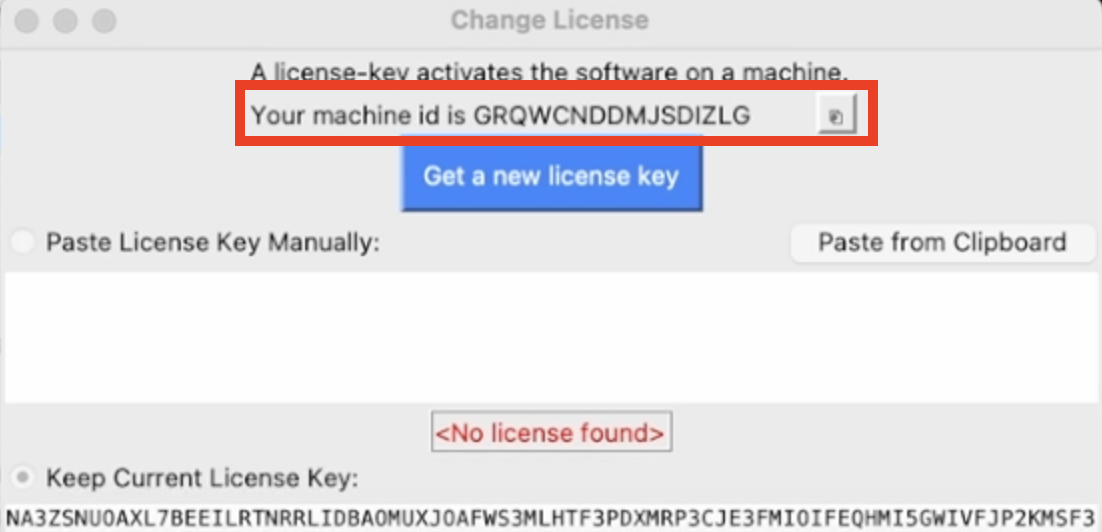
Screenshot from the licensing flow on the Eagle Eyes account page:
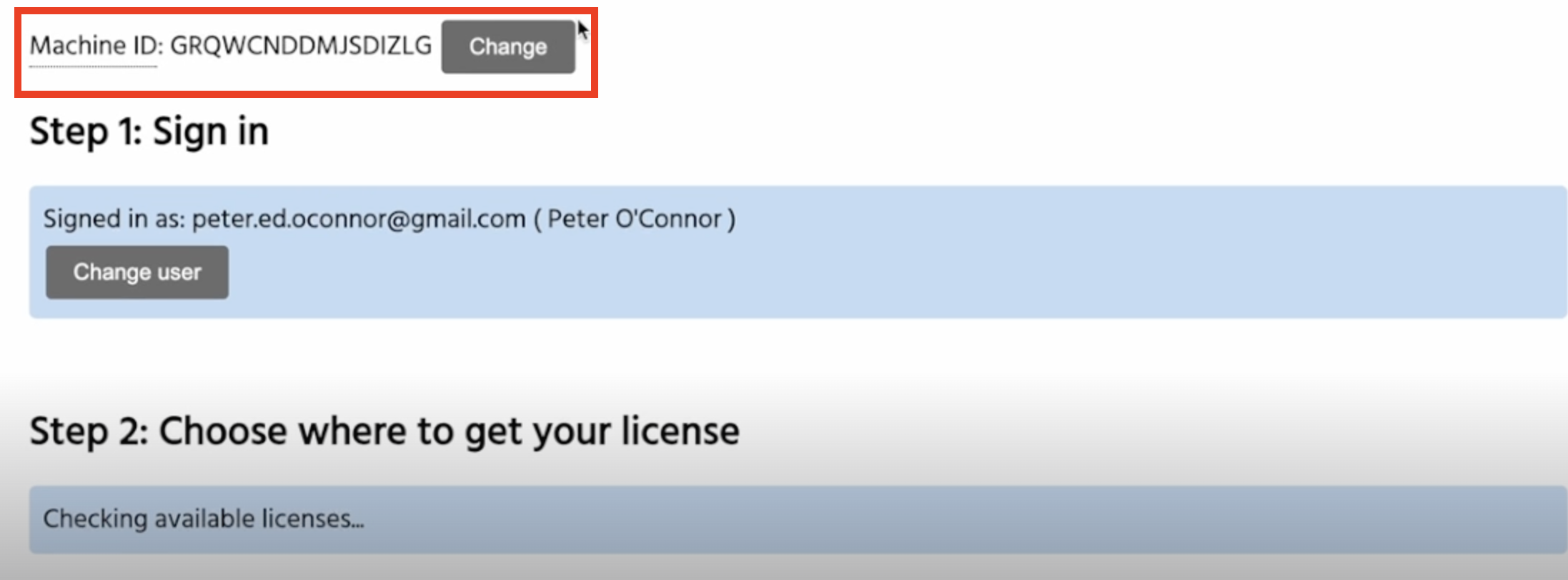
At the bottom of the license activation web page, copy the resulting key (200+ characters) back into Scan via "paste from clipboard".
For more information see the Eagle Eyes Scan user manual.
Refer to our Setup instructions For Comprehensive details on how to download Eagle Eyes Pilot onto your drone controller. Activate your license. and configure Controller settings.
Starting the activation process:
Activating your license (QR code method):
Troubleshooting (manual activation):
If you don't have a device with a camera or the QR scan doesn't work:
⏱ Important: Complete the activation process within 15 minutes. Each activation session times out after that period.
Note: The following Instructions apply to Eagle Eyes Pilot 1.5.0 BETA. For instructions on connecting CalTopo in Eagle Eyes Pilot 1.3.1 STABLE, see the video at the bottom of this answer.
Optionally connect to a default Caltopo map and optionally connect to a CalTapo Service Account. BETA
Change the CalTapo map you're on by scanning a QR code. BETA
Connecting to your team's CalTopo map. - For Eagle Eyes Pilot 1.3.1 STABLE
See additional instructions in the 📘 Eagle Eyes Pilot Manual
Yes, from within the Eagle Eyes Pilot app, this can be done even when flying offline. Your drone can be flown using either Eagle Eyes Pilot or DJI Pilot 2. Eagle Eyes Pilot automatically reads the DJI flight logs stored on your drone controller. Once you're back online, in just a few clicks, you can upload your drone's GPS tracks from that offline flight directly to your CalTopo map.
This feature is available for free and does not require a license. Note that real-time tracking to CalTopo does require a paid license, but offline tracking and seamlessly uploading recorded tracks remain free for all users.
Note: You can also download offline base maps from CalTopo and load them into Eagle Eyes so you have reliable reference maps when flying offline. This works by downloading MBTiles from CalTopo and uploading them into Eagle Eyes Pilot, allowing the map tiles to be stored directly on your controller for use without an internet connection.
Yes, as of Eagle Eyes Pilot 1.5.0, flights made with Eagle Eyes Pilot sync to Airdata.
Details:
The flight-logs are copied to the DJI-Log folder upon startup of Eagle Eyes Pilot. You can also manually copy them over from the Flight Logs menu on the home screen. Airdata will then sync them to the cloud.
Note: It normally takes a few minutes from the time your flight is done to the time it shows up in Airdata. If you are not on the internet, flight logs will sync after you reconnect.
The easiest way is with the pin/camera icon under the map on the right side of the Pilot app view:

Tap it and a dialog will pop up.
By default, "Capture View" is selected — open the dropdown and choose No photo, just add a marker.
.png)
Tap Capture then OK, and a marker will save at your current location.
.png)
If your drone has a laser rangefinder:
.png)
With "Mark object using laser measurement" toggled ON, the marker drops at the laser strike point.
With it OFF, the marker saves at the drone's current location.
.png)
To return to a saved point after swapping batteries:
The app is available for download through our website and not available on the app store. iOS users (IPhones, IPads): Sorry - DJI has abandoned iOS - so we do not have plans to support it for Eagle Eyes Pilot. Eagle Eyes Scan however is compatible with Mac OS ( find more details here).
The fastest and recommended method is via credit card on our website:
If you can't pay by credit card and need an invoice, we can provide one and accept payment by wire transfer. Just reach out to info@EagleEyesSearch.com to request it.
You can view our full privacy policy here. In short: your data always stays local, under your control, and is never uploaded to our servers.
Contact us at info@EagleEyesSearch.com